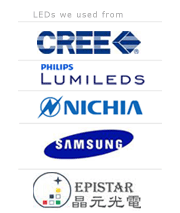News
Search
Popular search



News Source:
Looking at the current lighting market, smart lighting has already become a new product that manufacturers such as Philips are rushing to release. It was a hot topic not only at the Light+Building exhibition in Germany, but also in the recent Guangzhou International Lighting Exhibition earlier this month. The smart lighting market is still in its early stages of development, but manufacturers are eager to expand. The market anticipates to enter into a rapid growth period within one to two years.
High value added
Smart lighting is the marriage between electronics and networking. It is not only capable of realizing smart lighting system controls, self-regulation, and mood lighting, but also can connect with Internet platforms. This creates a higher value added service to users, including health regulator, location tracker, shopping recommendations, advertisements, among others.
The lighting industry is clearly heading towards a major transformation. Smart lighting is a segment of smart building technology. It requires the cooperation of the entire supply chain in order to develop.
Opens up room for growth
In regards to the questions about the continued growth of the LED industry, dispute in the market stems from the following points:
1)How long can the rapidly developing retrofit market support the industry?
2)Exactly how long is the lifetime for LED luminaires?
3)After the retrofit tide is over, what will the next growth driver for the industry be?
In terms of the first question, statistics gathered by the U.S. Department of Energy (DOE) shows that LED lighting penetration rate has still not reached 5 percent in 2013. If the penetration rate is able to double this year, retrofit demand will last for another three to four years. As for LED lighting lifetime, it is not the most important factor manufacturers consider during the rapid development period for LED lighting. Manufacturers instead focus on reducing costs before satisfying lifetime standards (20,000-30,000 hours). Moreover, after the industry matures, manufacturers are pushing towards launching products with the best lifetime.
Moreover, LED smart lighting is able to increase ASP and added value for products. It increases the room for development far beyond that of conventional lighting, meaning industry growth will continue long after the retrofit period has passed.
In China, the electricity cost of an LED driver with smart control capabilities is about RMB 10. Retail price of a luminaire with this type of power source is 20 to 30 percent more expensive than regular luminaires. Smart capabilities therefore can increase a normal lighting product’s premium by at least 20 percent (this is without consideration of additional complicated systems and higher configurations).
Without consideration of high value added products, the smart lighting industry has the market space to add an additional RMB 60 billion from 2014-2015. Smart lighting market value could reach RMB 80 billion by 2018, and surpass RMB 200 billion within five years based on compound annual growth rate (CAGR) 30 percent calculations.



